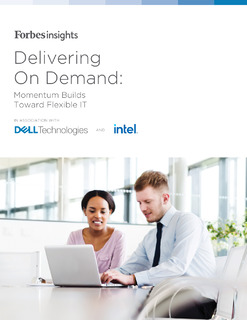These days, it’s well understood that technology has changed the way we manage businesses, serve customers and plan for the future. But the key to digital transformation doesn’t start with the way we use technology; it starts with the way we acquire it. This sets the stage for success down the line.
Flexible IT-based computing models—which include cloud computing and the integration of on-demand infrastructure services—provide a path to agility and speed. By moving to these models, IT executives have the opportunity to respond to the needs of their businesses in a matter of days, not months.
There are many options for developing a modern architecture built on flexible IT-based models. These include subscribing to infrastructure-as-a-service capabilities, leveraging application programming interfaces, employing containers or leasing equipment maintained by third-party providers. Since moving to flexible IT means faster and more responsive ways of working, it also leads to positive changes across organizations—IT staff no longer need to devote time to fixing, patching and debugging, and instead they can devote more time to engaging with the business. Since IT departments need to increase their adaptability and be able to meet evolving business demands, companies have an opportunity to reevaluate their current IT acquisition model and consider the benefits of flexible, consumption-based approaches.
To better understand the challenges IT leaders are facing and how they’re acquiring the assets they need, Dell Technologies, Intel and Forbes Insights surveyed 800 executives and IT decision makers from mid-to-large organizations across the globe. In this report, we explore various IT consumption models and the benefits organizations are seeing from leveraging flexible IT-based models.

